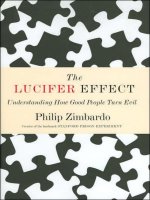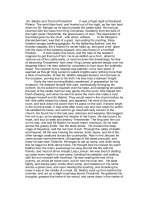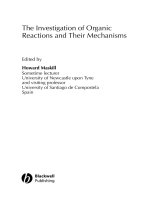- Trang chủ >>
- Khoa Học Tự Nhiên >>
- Vật lý
double-effect reasoning doing good and avoiding evil nov 2006
Bạn đang xem bản rút gọn của tài liệu. Xem và tải ngay bản đầy đủ của tài liệu tại đây (1.03 MB, 245 trang )
OXFORD STUDIES IN THEOLOGICAL ETHICS
General Editor: Oliver O'Donovan
OXFORD STUDIES IN THEOLOGICAL ETHICS
The series presents discussions on topics of general concern to Christian Ethics, as it is currently taught in universities
and colleges, at the level demanded by a serious student. The volumes will not be specialized monographs nor general
introductions or surveys. They aim to make a contribution worthy of notice in its own right but also focused in such a
way as to provide a suitable starting-point for orientation.
The titles include studies in important contributors to the Christian tradition of moral thought; explorations of current
moral and social questions; and discussions of central concepts in Christian moral and political thought. Authors treat
their topics in a way that will show the relevance of the Christian tradition, but with openness to neighbouring
traditions of thought which have entered into dialogue with it.
Double-Effect Reasoning
Doing Good and Avoiding Evil
T. A. Cavanaugh
CLARENDON PRESS ċ OXFORD
Great Clarendon Street, Oxford
OX2
6
DP
Oxford University Press is a department of the University of Oxford.
It furthers the University's objective of excellence in research, scholarship,
and education by publishing worldwide in
Oxford New York
Auckland Cape Town Dares Salaam Hong Kong Karachi
Kuala Lumpur Madrid Melbourne Mexico City Nairobi
New Delhi Shanghai Taipei Toronto
With offices in
Argentina Austria Brazil Chile Czech Republic France Greece
Guatemala Hungary Italy Japan Poland Portugal Singapore
South Korea Switzerland Thailand Turkey Ukraine Vietnam
Oxford is a registered trade mark of Oxford University Press
in the UK and in certain other countries
Published in the United States
by Oxford University Press Inc., New York
© T. A. Cavanaugh 2006
The moral rights of the author have been asserted
Database right Oxford University Press (maker)
First published 2006
All rights reserved. No part of this publication may be reproduced,
stored in a retrieval system, or transmitted, in any form or by any means,
without the prior permission in writing of Oxford University Press,
or as expressly permitted by law, or under terms agreed with the appropriate
reprographics rights organization. Enquiries concerning reproduction
outside the scope of the above should be sent to the Rights Department,
Oxford University Press, at the address above
You must not circulate this book in any other binding or cover
and you must impose the same condition on any acquirer
British Library Cataloguing in Publication Data
Data available
Library of Congress Cataloguing in Publication Data
Data available
Typeset by SPI Publisher Services, Pondicherry, India
Printed in Great Britain
on acid-free paper by
Biddles Ltd., King's Lynn
ISBN 0-19-927219-0 978-0-19-927219-8
13579108642
Acknowledgements
Reading Alan Donagan's critique, I came upon double effect, which has interested me for the past decade. That
interest culminates in this book. In my graduate work at the University of Notre Dame, Professor David Solomon
introduced me to double effect while Professor Ralph McInerny directed and supported my work. I thank them. Over
the years, I discussed double effect with many colleagues and students. I thank Professors Joe Boyle, Kevin Flannery,
Jorge Garcia, John Haldane, Christopher Kaczor, Edward Lyons, Stephen McPhee, Don Marquis, and my University
of San Francisco colleagues, particularly Professors Raymond Dennehy and Michael Torre. Of the many students at
the University of San Francisco with whom I have been privileged to philosophize, I particularly thank Mr Logan Sims
(who scrupulously checked references) and those in my double-effect seminar. I thank the audiences to whom I have
spoken, in particular those at Marquette, Notre Dame, Saint Mary's College of California, Stanford, and, my alma
mater, Thomas Aquinas College, whose tutors, in particular Ronald McArthur and Thomas Dillon, have encouraged
me over the years.
I owe Reverend Oliver O'Donovan a large debt of gratitude for eliminating imprecisions and infelicities from the
present work, while retaining faith in the same. I also thank Ms Lucy Qureshi and Mr Jeff New for their thoughtful
assistance with the manuscript and typescript. I lay claim to any and all remaining errors.
This work represents myriad re-visions of how to think about double effect. Earlier approaches appeared elsewhere.
Small portions of what I consider best in those attempts here survive. I acknowledge and thank The Thomist for that
portion of Chapter 1, the Aquinas Review for that of Chapter 2, and the American Catholic Philosophical Quarterly, Cambridge
Quarterly of Healthcare Ethics, Christian Bioethics, Journal of Applied Philosophy, and
Philosophical Papers for those portions of Chapters 3, 4, and 5 that appeared earlier.
I thank the Mortimer Fleishhacker Endowment for Philosophy at the University of San Francisco for financial support
which enabled me to devote a sabbatical to completing this work. Finally, for their patience with and sustained interest
in casuistry, I thank those to whom I dedicate this work: my wife and son.
T. A. Cavanaugh
San Francisco
January 2006
vi
Dedication
To Bonnie, for being so; to Thomas, for calling to find out more.
This page intentionally left blank
CONTENTS
Introduction xi
1. The history of double-effect reasoning 1
1.1. Aquinas's originating account 1
1.2. Developments of Thomas's account 14
1.3. Simplifying the received criteria 26
2. The contemporary conversation 38
2.1. Proportionalism 38
2.2. Anti-consequentialist deontological alternatives to DER 47
2.3. Contemporary versions of DER 59
3. The i/f distinction: distinguishing intent from foresight 73
3.1. Coming to terms 74
3.2. The problem of closeness 82
3.3. Responses to the problem of closeness 84
3.4. An account of intention 91
3.5. Application to contrasted cases 108
4. The i/f distinction's ethical import 118
4.1. Common misunderstandings of the i/f distinction's relevance 119
4.2. The first-order/second-order distinction 122
4.3. The distinction's ethical relevance 134
5. DER and remaining considerations 164
5.1. DER and reparations 165
5.2. DER and allowing 166
5.3. DER and the wrongful acts of other agents 177
5.4. Double effect, non-combatant casualties, and the laws of war 180
5.5. Double effect and public policy concerning euthanasia 183
5.6. Double effect as applied to wrongful acts and the law 190
5.7. DER in law 192
5.8. DER and Roman Catholic moral theology 196
Bibliography 202
Index 211
x
Introduction
Do good. Avoid evil. Taken generally, these foundational moral norms offer us clear guidance. The good has the
nature of what we ought to pursue; evil, what we should flee. We should preserve ourselves and avoid destruction. We
ought to reproduce and rear our offspring while warding off the harms a sharp-edged world poses. We ought to seek
knowledge and live with others while shunning ignorance and eschewing offence to our neighbours. Eating, drinking,
clothing, sheltering, copulating, teaching, and talking instance acts seeking good and avoiding evil.
Yet, as we pursue good and avoid evil, a tangled mass confronts us. The good we do results in evil; the evil we avoid
prevents the realization of some good. The oncologist who seeks to cure by chemotherapy also nauseates, debilitates,
and sickens his patient. The mother who admonishes her daughter also embarrasses her before peers. The maker of a
legitimate product—a drug, spray paint, or glue—finds that others abuse it. One need not multiply examples. These
quotidian experiences and a moment's reflection indicate that the good one should seek and the evil one ought to
avoid inextricably bind at times. In such circumstances how ought we to act? If one were to pursue the good, one
would cause the very evil one ought to avoid. Yet, if one were to avoid the associated evils, one would not achieve the
goods of health, discipline, merited praise, and so on. In such circumstances, can one do good and avoid evil? If so,
how?
To engage the most serious cases in terms of which thinkers have addressed these questions, consider the following
scenarios. Your terminally ill patient experiences severe pain. In order to relieve her otherwise intractable pain you
must sedate her with barbiturates that will also suppress her respiration. Relieved of pain, she will be asphyxiated and
die.
1
In another situation, your terminally ill patient suffers severe pain. She thinks that she would be better off dead;
she repeatedly requests a lethal injection.
You can destroy the enemy artillery installation by tactical bombing. However, given the proximity of the artillery to the
hospital and the imprecision and destructive force of your bombs, you know that if you bomb you will kill and maim
the patients in the hospital. In another case, your commander proposes to lower the enemy's morale by terror bombing
the hospital.
2
xii
1
I call this terminal sedation. For a description of an actual instance, see e.g. the case Ira Byock, MD, a hospice physician expert in palliation,
presents (Byock 1997, 209–16). Fortunately, one typically need not resort to terminal sedation to relieve pain at the end of life. As Byock
notes, however, there remain instances in which one can relieve pain only by sedation.
2
Some refer to what I call tactical bombing as strategic bombing. ‘Strategic’ is especially unsuitable; during World War II the primary
responsibility of the Royal Air Force's Office of Strategic Bombing was the terror bombing of non-combatants.
Pregnant, you have just been informed that you also have life-threatening uterine cancer. Your doctor must remove the
cancerous uterus before the foetus is viable. If you have the hysterectomy necessary to preserve your life, the foetus
will die. In another case, you are in labour, but the baby's head is too large to exit the birth canal. Nothing can be done
for both of you. The doctor can save your life by decapitating the baby; or do nothing, and you both die, you die and
the child lives, or the child dies and you live.
3
A torpedo strikes the bow of a submarine and explodes. Water floods the forward compartments. The submarine
begins to sink. The captain commands you to close the flood-door. You will thereby trap the submariners at the bow in
a watery grave. Yet, if the door remains open, you, the entire crew, and the submarine itself will be lost. In a different
scenario, the submarine has sunk. Fortunately, you and your fellow crew members escaped. You find yourself
marooned; food has run out. In order to feed the crew, the captain commands you to kill just as many submariners as
would have been killed by closing the watertight door. If you do not, the entire crew will starve.
xiii
3
One calls this procedure an obstetric craniotomy. The procedure addresses rarely occurring cephalo-pelvic disproportion in which the child's
head (cephalo) is too large to exit from the mother's birth canal (pelvic). ‘Craniotomy’ denotes the cutting of the cranium. As used in the
present work, the term refers to an obstetric craniotomy. In an obstetric craniotomy, a physician cuts a hole in the baby's head, removes its
brain, and dismembers its skull. Fortunately, the (already small) number of such grisly cases has almost been eliminated in developed
countries, due to better prenatal care that discovers disproportion and prepares for delivery via Caesarian section. (For a detailed description
of an obstetric craniotomy, see Williams 1985, 1140–2).
One errs in thinking that ethics primarily concerns such conflicted life-and-death situations. More generally, one goes
awry in holding that circumstances in which good inextricably binds with evil preoccupy ethics. Nonetheless, responses
to such cases answer the questions this work addresses; namely, whether and how one can do good and avoid evil in
circumstances inseparably joining the two. Moreover, how one addresses these cases sheds light on the earlier-noted
ordinary instances of acting when good binds with bad. For example, does the oncologist act well entirely because the
good of curing outweighs the bad of temporarily sickening, or must one take into account other factors, such as his
intent? Would the overall goodness of the mother's act of disciplining her daughter be diminished or even vitiated if
she also sought to embarrass?
One straightforward solution to hard cases calculates the goods and evils in each scenario. Comparing these—counting
the dead and living—and giving weight solely to such consequentialist considerations leads one in the last pair of cases,
for example, to close the doors and to kill the submariners for food. In a consequentialist ethic all choices (including
hard ones) have essentially the same solution: opt for that scenario having the greatest net good consequences or the
least net bad consequences. In such an ethic, innocence has ethical import, but only up to a point. The relative amounts
of good and bad alone decisively matter. (Moreover, as we shall see in section 4.2, a consequentialist ethic does not
acknowledge the import of intent in the evaluation of acts.)
xiv
For an ethic incorporating exceptionless moral norms such cases pose serious difficulties. In this work, I assume that
there are exceptionless moral norms; particularly that it is always wrong intentionally to take the life of or grievously
harm the innocent.
4
Before addressing whether and how one can do good and avoid evil in circumstances inextricably
binding the two and implicating the norm against killing the innocent, the latter requires articulation. To what does the
acceptance of this norm commit one?
‘Innocent’ admits of ambiguity; literally, it means not harmful. One innocent in the literal sense does not physically
pose a threat. Call him materially innocent. A person possessing material innocence enjoys inviolability under the
norm. What of those lacking material innocence (namely, those who pose a threat)? Refer to them as materially
responsible.
5
Amongst the materially responsible, some pose the threat with knowledge and control (with
voluntariness) while others do so without knowledge or control (without voluntariness). Consider the former group
first. Call them formally responsible. For example, consider a police officer and his assailant both of whom point a gun
at one another. Both have material responsibility for threatening one another.
xv
4
I understand the norm against killing the innocent to prohibit the intent to kill or grievously harm the innocent. Including grievous harm in
the norm both agrees with the common-sense interpretation of why one ought not to kill the innocent (because killing profoundly harms)
and represents the long-standing legal and moral interpretations of what the norm against killing prohibits. The norm against killing the
innocent prohibits killing, maiming, putting into persistent vegetative states, paralyzing, and so on.
5
At this stage, one avoids ‘guilt’ insofar as it connotes wrongness (lack of a justification). Prior to examining the justification (or lack thereof)
for the posing of the threat, one focuses on to whom one may attribute the threat.
Moreover, both do so with knowledge and control. Therefore, in addition to material responsibility, they both have
formal responsibility. In order to determine who enjoys inviolability under the norm, one asks: does either have a
justification for posing the threat? If the assailant threatens the officer insofar as the officer prevents him from taking
another's property, the officer possesses while the assailant lacks a justification. The officer retains innocence while the
assailant does not. The norm protects the officer but not the assailant (bearing in mind caveats concerning the use of
non-lethal force, proportionateness, and so on). Of course, were the assailant to stop threatening the officer, he, too,
would enjoy inviolability under the norm.
Now consider the latter group of the materially responsible; namely, those who pose the threat without knowledge or
control (without voluntariness). Refer to this group as innocent threats. An innocent threat lacks material innocence
insofar as he poses a threat (has material responsibility). Yet, he possesses what one may refer to as formal innocence.
Lack of beliefs, desires, intent, in short, the absence of voluntariness respecting one's being harmful constitutes formal
innocence.
6
An innocent threat threatens without voluntariness. (Imagine a person infected with a highly contagious
lethal disease, who, through no fault of his own, poses a lethal threat to others.)
xvi
6
Within criminal law, the principle, actus non facit reum, nisi mens sit rea captures the point at issue. The bad doing of posing a threat (actus) does
not make the crime (reum), absent the mental element (mens rea). For a related discussion, see sec. 2.2.1.
Does the norm against killing the innocent extend to innocent threats? Some think that one may justifiably kill an
innocent threat (see, for example, Alan Donagan's account in section 2.2.1). If this were so, the exceptionless norm at
issue would amount to something like, ‘killing or severely injuring the materially innocent (physically harmless) and
those amongst the formally responsible who possess a justification is never justifiable’.
7
In this work, I understand
innocence as including, but not being limited to, material innocence. That is, the norm at issue states, ‘it is always
seriously wrong to kill or grievously harm the materially innocent, the formally responsible who possess a justification
for posing a threat, and the formally innocent’. That is, one always does a serious wrong when one kills or grievously
harms a person who does not threaten at all, threatens with a justification, or does not voluntarily threaten.
8
This norm
appears more reasonable than one that would not protect innocent threats. For humans differ most markedly from
other beings insofar as they are rational beings who, thereby, act voluntarily. One appropriately relates to another
human when one attends to the presence or absence of voluntariness in his conduct. Accordingly,
xvii
7
One consequence of this might be that performing the craniotomy would no longer violate the norm. Although, if the child innocently
threatens the mother's life so also the mother innocently threatens the child's life. Changing the norm may not entirely resolve the problem.
For one then must determine (by a standard other than innocence) both whom to kill and whom to defend.
8
By ‘ person’ I mean a member of the species homo sapiens. Of course, one threatened by a formally innocent person may not know that the
innocent threat is innocent. The point is that when one does know, one cannot ethically kill the innocent threat.
formal innocence has ethical significance for inviolability. In any case, I do not argue for this norm; rather, having here
articulated it, I assume it.
Many questions attend this norm, most of which I put aside. For example, I do not address the retrospective import of
this norm, as it bears on punishing those who violate it. Does capital punishment undermine or vindicate the norm?
Moreover, what, precisely, is it to possess a justification while one voluntarily poses a lethal threat? In the example
above, I assert that the police officer possesses a justification while his assailant lacks one. As will become evident
throughout this work in my consideration of killing in war, I hold that soldiers in a just war possess justifications in
their killing of enemy combatants. Again, I note these important matters only to put them aside. Rather, I address the
questions of whether and how one can do good and avoid evil when good and evil inextricably bind by considering the
most pointed instances of the same, namely, those in which human lives stand in the balance. I answer these questions
by considering instances of homicide for a number of reasons. First, in doing so I follow a venerable tradition and the
contemporary debate both of which address these questions by considering instances of homicide. Second, such cases
simply have perennial interest. Third, and finally, the preservation or loss of a human life instances profound good or
evil. Accordingly, it makes sense to address the questions above in terms of human life and death, as many others have
done and no doubt will continue to do. I now turn to that task.
xviii
The noted cases pose problems to one who holds that killing or seriously harming the innocent is always wrong. For
example, does he who closes the submarine's flood-door violate the norm against killing the innocent? A proponent of
this norm might say that closing the door is unjust killing, and, therefore, must not be done. Yet, by not closing the
flood-door does one not thereby fail to avoid the evil of the remaining crew drowning? Can one do good and avoid
evil while accepting the exceptionless wrongness of killing the innocent?
One approach open to one who accepts the norm while not thinking that closing the floor-door need violate it
depends upon fundamental concepts that conceptually precede moral evaluation. As G. E. Moore notes, ‘ethics is
undoubtedly concerned with the question what good conduct is; but, being concerned with this, it obviously does not
start at the beginning, unless it is prepared to tell us what is good as well as what is conduct’ (Moore 1954, 2). Prior to
ethics, one studies what makes conduct conduct. Moral psychology (also referred to as action theory) investigates what
makes an action an action by focusing on its mental elements. These elements include knowledge, belief, desire, will,
intent, ends, and means. Relying on moral psychology, one asks: ‘what conduct, precisely, constitutes unjust killing?’
One salient feature of acts this approach attends to is the intention of the agent. It distinguishes between intending to
kill or gravely harm, and doing something that has as one of its results the death of or grievous harm to the innocent
foreseen as inevitable, but not intended. One distinguishes the intended from the foreseen, even when what
xix
is foreseen is foreseen as inevitable. Employing this distinction (henceforth, the intended/foreseen, or i/f distinction),
closing the flood-door need not violate the norm. Nonetheless, foreseeing that the deaths of the innocent will result
from a course of action militates against pursuing that action. Thus, in addition to the i/f distinction this response
requires that the agent has some good reason for doing what will certainly result in the deaths of innocents. This
account of the submarine case and associated cases I call double-effect reasoning, or DER.
9
To suggest the continuity of a focus upon intentions in the evaluation of double-effect cases with our more ordinary
judgements of actions, consider a novel such as Jane Austen's Emma. When the book's eponymous heroine learns that
her protégée Harriet Smith hopes for a marriage proposal from Mr Knightley, Emma realizes that she herself loves
Knightley. He must marry no one but Emma. Composing herself, she enquires into her friend's evidence for the
improbable match (given their social and temperamental disparities) of Harriet and Mr Knightley. Miss Smith recounts
the various occasions indicating Mr Knightley's affections for her, some of which Emma herself witnessed. Realizing
with dread the plausibility of Harriet's interpretation
xx
9
I use the term double-effect reasoning (DER) to refer to what has been called, variously, the Principle of Double Effect (PDE, Selling 1980),
the Doctrine of Double Effect (DDE, Quinn 1989), and the Rule of Double Effect (RDE, Ramsey 1978). There are a number of reasons to
do so. First, it is not a principle, but, principally, a set of criteria. Second, thinkers often reduce it to one criterion, and ‘principle’ reinforces this
erroneous reduction. ‘Doctrine’ denotes an authoritative teaching, while DER stands on firm philosophical ground.
of Knightley's behaviour, Emma exerts herself to say: ‘Harriet, I will only venture to declare, that Mr. Knightley is the
last man in the world, who would intentionally give any woman the idea of his feeling for her more than he really does’
(Austen
10
1991, III. xi. 421). Emma implicitly and favourably compares Knightley to Frank Churchill, who does
intentionally give false impressions. In fact, Knightley does not love Harriet; nor does he seek to deceive her into
thinking he does. Rather, he acts honestly (in attempting to match Harriet with her earlier rebuffed suitor, Mr Martin);
Emma and Harriet misunderstand him. They mistake him, however, only up to a point. For Emma correctly notes that
Knightley would never intentionally deceive. This remains a fixed point in her interpretation of his conduct. Because of
this unchanging truth about his behaviour (and his caution not to reveal his actual intent to Emma, who had
mischievously prevented the match of Harriet and Mr Martin), this impossible match of Harriet and George Knightley
is, ‘far, very far, from impossible,’ from Emma's perspective (ibid., III. xi. 423). The importance of intent in
understanding and evaluating conduct plays a large role in this novel, as in other works by Austen and other keen
observers of daily human intercourse. Of course, she does not address how one evaluates acts when good inextricably
binds with evil. Nevertheless, her presentation of the role of intent in the ordinary commerce of life suggests what one
might attend to in considering such cases. Moreover, one's analysis of acts in which good binds with evil has
plausibility partially to the extent to which it agrees with our day-to-day evaluations of
xxi
10
Among such non-absolutist anti-consequentialist thinkers are Foot (1985), Nagel (1986), Quinn (1989), and Sterba (1992). Boyle and
Donagan separately argue that non-absolutist anti-consequentialists superfluously employ double effect (Boyle 1991; Donagan 1977, 156–63).
I do not argue against those who do not acknowledge exceptionless moral norms and use double-effect reasoning. I argue for the tenability of
double-effect reasoning, assuming the exceptionless moral norm against killing or grievously harming the innocent. Again, I do not argue for
the norm except to the extent to which arguments for double effect partially defend the tenability of such a norm. Insofar as DER resolves
hard cases generated by such norms, successfully to argue for DER establishes the reasonableness of such norms.
day-to-day acts as exemplified in a writer such as Austen. With this in mind, let us return to our subject.
Typically, exceptionless moral norms serve as the point of departure for double-effect reasoning. Accordingly, it would
be mistaken to argue that double effect does not establish the serious wrongness of, for example, killing or grievously
harming the innocent. For one's commitment to the norm leads one to employ double-effect reasoning. Nevertheless,
if one who acknowledges such norms must have recourse to DER in order to resolve hard cases, then to the extent to
which such reasoning succeeds or fails, it discloses such norms as tenable or untenable.
Not all who propose double effect do so because of a commitment to exceptionless norms. Some deontologists who
do not hold exceptionless moral norms have proposed double effect as differentiating, for example, tactical and terror
bombing as more and less justifiable. Thus, DER may resolve hard cases for those who acknowledge exceptionless
norms and for those who take a middle path between consequentialism on the one hand and an ethics including such
norms on the other.
11
All proponents of DER
xxii
11
Being wrong without exception and being gravely wrong often coincide. One would err, however, if one were to think that to break an
exceptionless norm would be, thereby, to do grave wrong. For example, Augustine and Aquinas argue that lying is exceptionlessly wrong
while holding that many lies are peccadillos. For Aquinas's discussion, see Summa theologiae,II–II q. 110.
reject consequentialism's founding claim; namely, that in evaluating an act consequences alone matter. Given this
consequentialist commitment, the i/f distinction cannot have moral relevance in act-evaluation. For intent and
foresight can result in otherwise similar consequences (as stipulated in the debate and as is indeed sometimes the case).
Thus, DER represents one of the principal conflicted points regarding consequentialism's foundation. Accordingly,
while some dispute the ethical import of DER, none doubt the more general importance of the controversy for
overarching ethical accounts.
In this work, I assume the exceptionless and serious wrongness of intentionally killing or grievously harming the
innocent. I focus on consequentially comparable cases involving killing or gravely harming the innocent. I consider
three pairs of classically contrasted cases: terminal sedation/euthanasia; tactical bombing/terror bombing; and
hysterectomy/craniotomy. I argue that one may justify the first member of each pair in accordance with DER while
holding that the second member cannot be justified.
In the first chapter I present the historical background of DER, beginning with Aquinas's account of a private
individual's homicidal self-defence and concluding with a consideration of the Jesuit theologian J. P. Gury's nineteenth-
century formulation of the criteria of double effect. In the
xxiii
second chapter I consider contemporary offshoots, such as proportionalism; alternatives, such as Alan Donagan's
casuistry of material guilt and Frances Kamm's non-absolutist Principle of Permissible Harm; and recent presentations
of double effect, such as that of Warren Quinn and the trio of Finnis, Grisez, and Boyle. I devote the third and fourth
chapters to considering the i/f distinction. I do so in Chapter 3 by presenting the resources in terms of which one
distinguishes intent from foresight. In Chapter 4 I attend to the more controversial issue of the ethical relevance of this
distinction, finding its import both in broadly Aristotelian-Thomistic features of action as voluntary and in a Kantian
focus on the victim as an end in himself. I conclude the work in Chapter 5 by considering DER's application to
allowings and to the wrongful acts of other agents as they depend upon one's own otherwise good act. Moreover, I
indicate how international laws bearing on the conduct of war, the laws and public policies of individual countries,
constitutional legal systems that incorporate exceptionless legal norms, and the official moral dogmas of the Roman
Catholic Church employ DER.
xxiv









